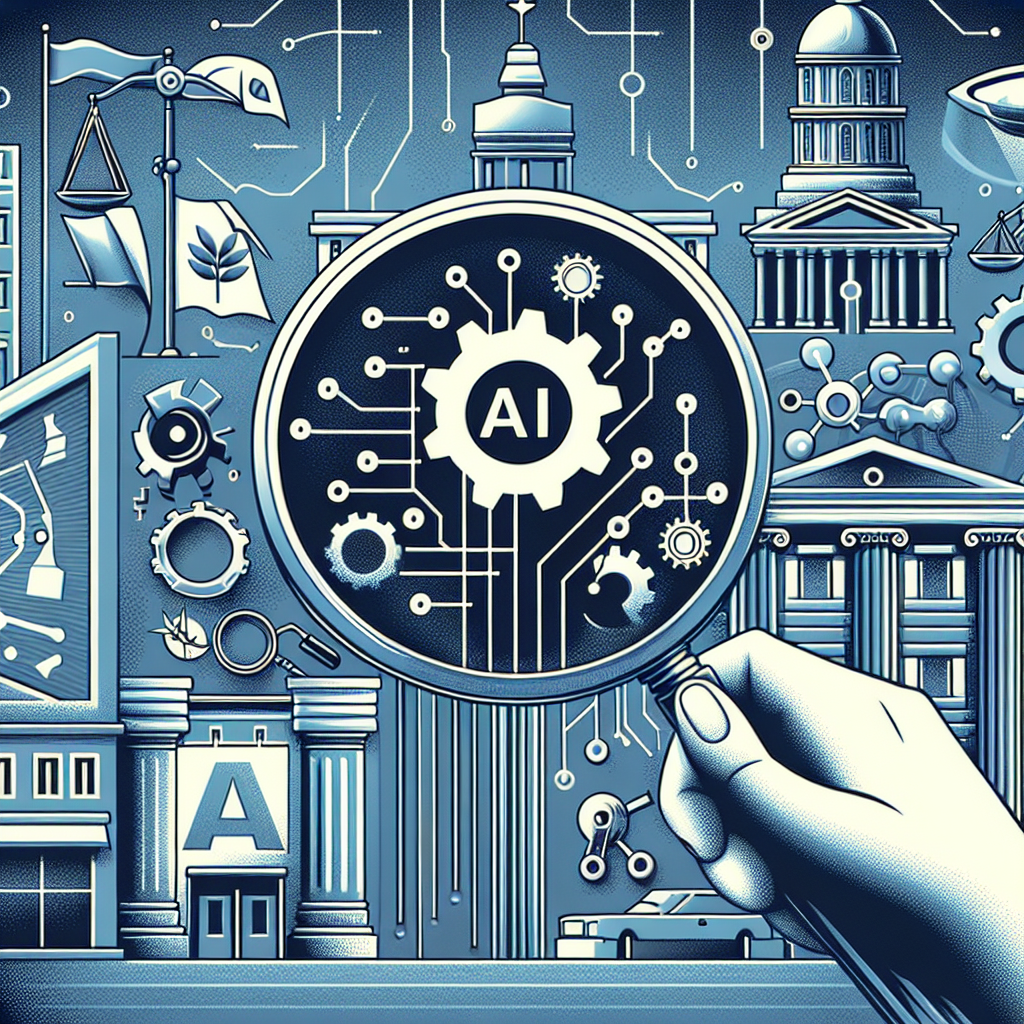Artificial Intelligence (AI) is increasingly being used in governance to streamline processes, improve decision-making, and enhance public services. While AI has the potential to revolutionize governance, there are also risks associated with its use that must be carefully considered. In this article, we will explore the impacts of AI on public policy and the potential risks involved.
AI in Governance: Impacts on Public Policy
AI has the potential to greatly impact public policy in a number of ways. One of the key areas where AI can be beneficial is in data analysis. AI algorithms can process vast amounts of data quickly and accurately, allowing policymakers to make more informed decisions based on evidence rather than intuition. This can lead to more effective policies that are tailored to the specific needs of the population.
AI can also be used to improve public services. For example, chatbots powered by AI can provide citizens with information and assistance on government services, reducing the burden on call centers and improving the overall user experience. AI can also be used to predict demand for services, optimize resource allocation, and improve the efficiency of public service delivery.
Another area where AI can have a significant impact is in regulatory compliance. AI systems can help government agencies monitor compliance with regulations and detect potential violations more effectively than traditional methods. This can help ensure that regulations are being followed and that public safety is being protected.
Despite these potential benefits, there are also risks associated with the use of AI in governance that must be carefully considered.
The Risks of AI in Governance
One of the key risks of AI in governance is the potential for bias in decision-making. AI algorithms are only as good as the data they are trained on, and if this data is biased or incomplete, the algorithms may produce biased results. This can lead to discriminatory outcomes that disproportionately affect certain groups of people. For example, if an AI algorithm used to determine eligibility for government benefits is trained on historical data that reflects biases against certain groups, the algorithm may perpetuate these biases in its decision-making.
Another risk of AI in governance is the potential for errors and unintended consequences. AI systems are complex and can be difficult to understand, making it challenging to identify and correct errors. If an AI system makes a mistake in a critical decision, such as determining eligibility for a government program or allocating resources, the consequences can be severe. Additionally, AI systems can be vulnerable to manipulation and hacking, which can lead to malicious actors influencing government decisions and policies.
Privacy is another major concern when it comes to AI in governance. AI systems often rely on vast amounts of personal data to make decisions, and there is a risk that this data could be misused or compromised. For example, if a government agency uses AI to analyze citizens’ data for the purposes of predicting future behavior, there is a risk that this data could be used for surveillance or other nefarious purposes without the consent of the individuals involved.
Finally, there is a risk that the use of AI in governance could lead to a lack of accountability and transparency. AI systems can be opaque and difficult to interpret, making it challenging for citizens to understand how decisions are being made and hold government officials accountable for their actions. This lack of transparency can erode trust in government institutions and lead to a sense of alienation among the public.
FAQs about the Risks of AI in Governance
Q: How can bias in AI algorithms be mitigated in governance?
A: Bias in AI algorithms can be mitigated by carefully monitoring and auditing the data used to train the algorithms, ensuring that diverse perspectives are represented in the data, and regularly testing the algorithms for bias and fairness.
Q: What are some examples of unintended consequences of AI in governance?
A: Unintended consequences of AI in governance can include errors in decision-making, unintentional discrimination, and the misuse of personal data. For example, an AI system used to allocate resources for public services may inadvertently exclude certain populations from receiving benefits due to biases in the data used to train the algorithm.
Q: How can privacy concerns related to AI in governance be addressed?
A: Privacy concerns related to AI in governance can be addressed by implementing strong data protection measures, ensuring that data is only used for its intended purpose, obtaining consent from individuals before collecting their data, and regularly auditing data practices to ensure compliance with privacy regulations.
Q: How can transparency and accountability be improved in the use of AI in governance?
A: Transparency and accountability in the use of AI in governance can be improved by making algorithms and decision-making processes more transparent, providing explanations for AI-generated decisions, involving stakeholders in the design and implementation of AI systems, and establishing mechanisms for oversight and accountability.
In conclusion, while AI has the potential to greatly enhance governance and public policy, there are also significant risks that must be carefully considered and addressed. By being aware of these risks and taking proactive steps to mitigate them, governments can harness the power of AI to improve decision-making, enhance public services, and better serve their citizens.

